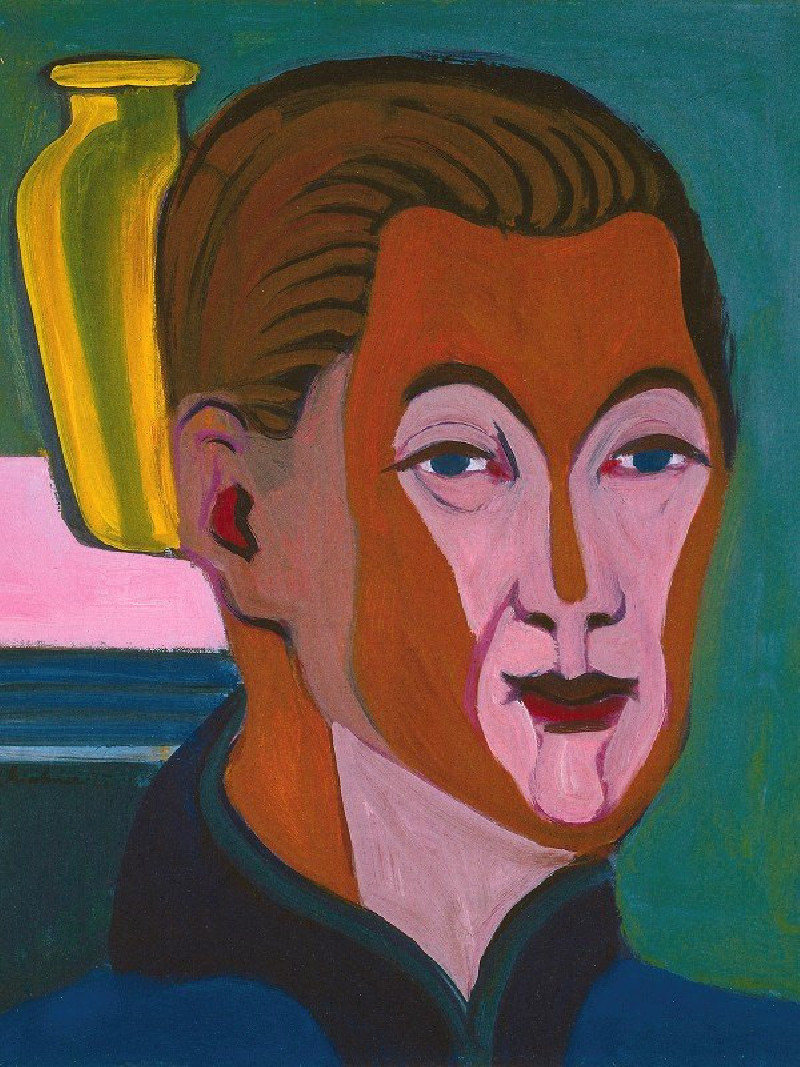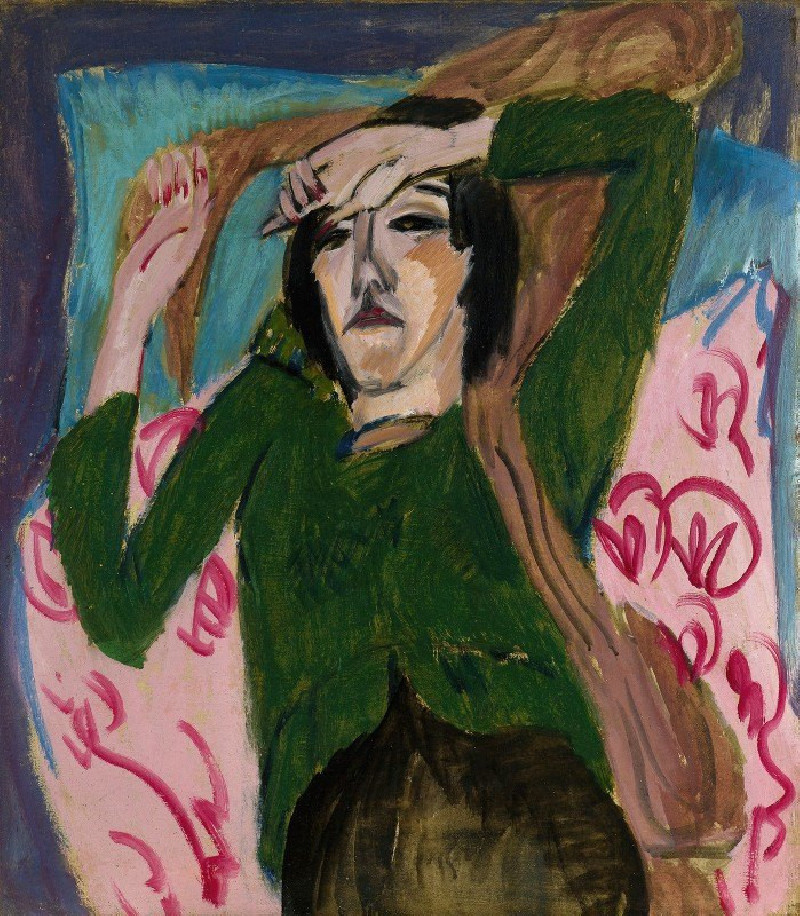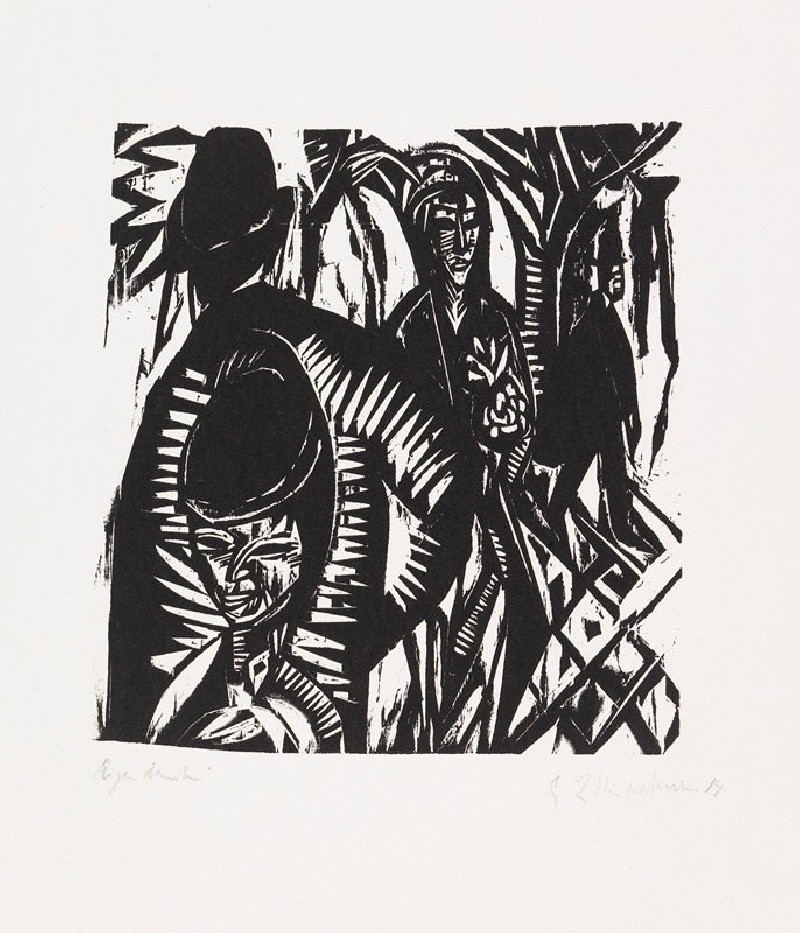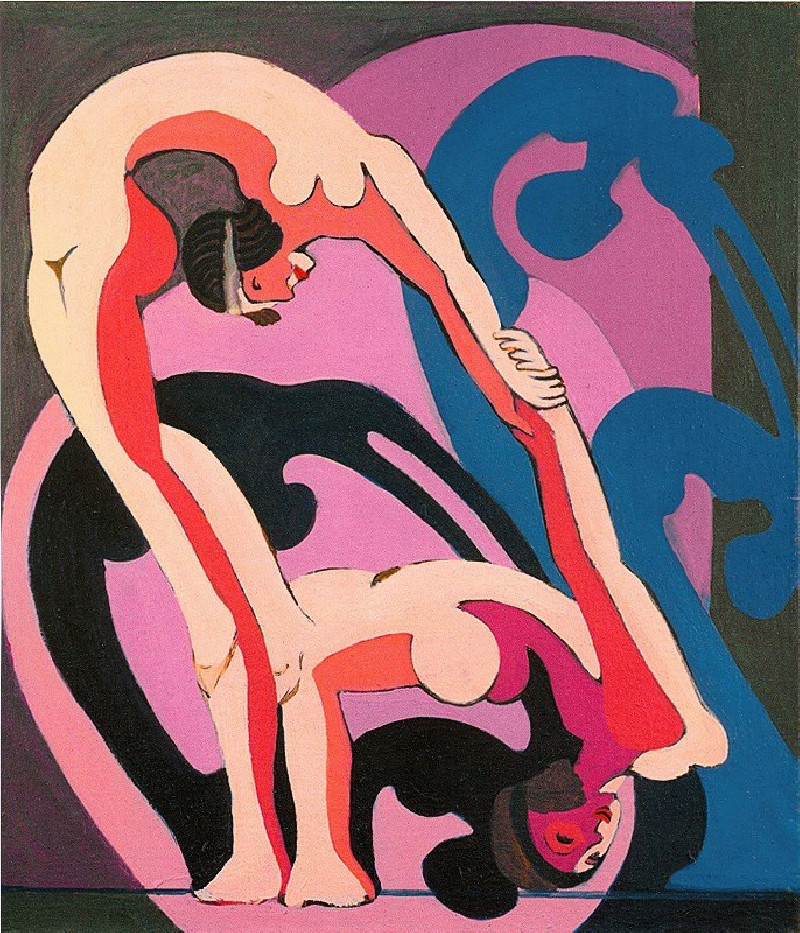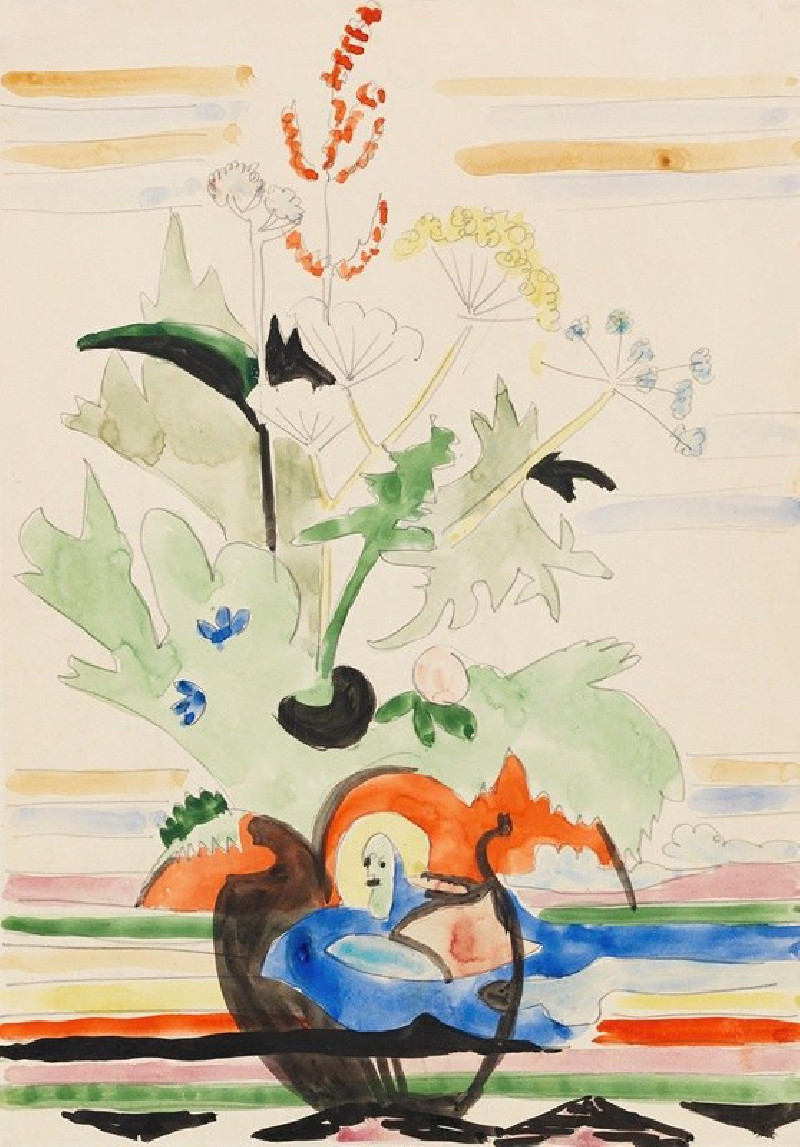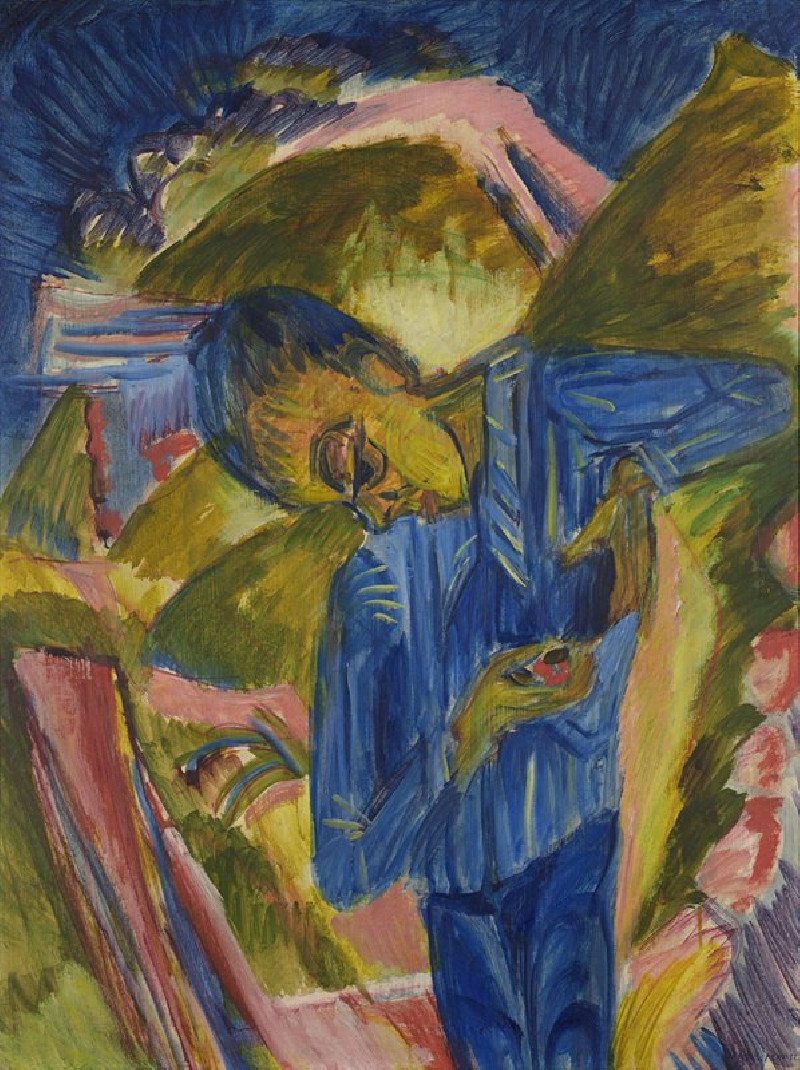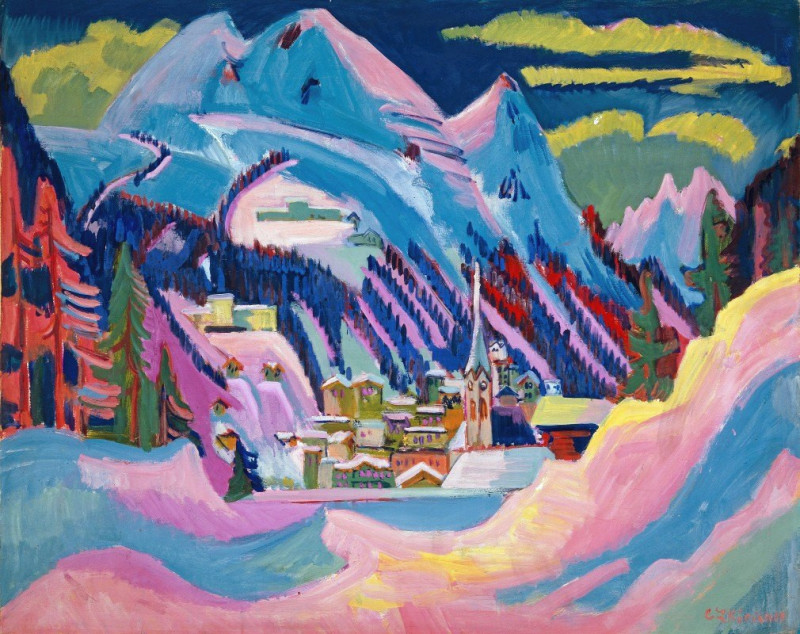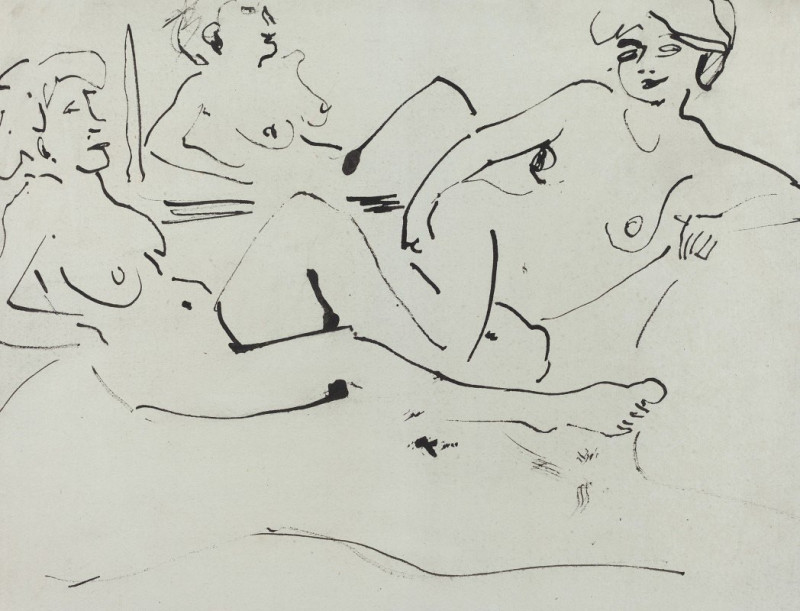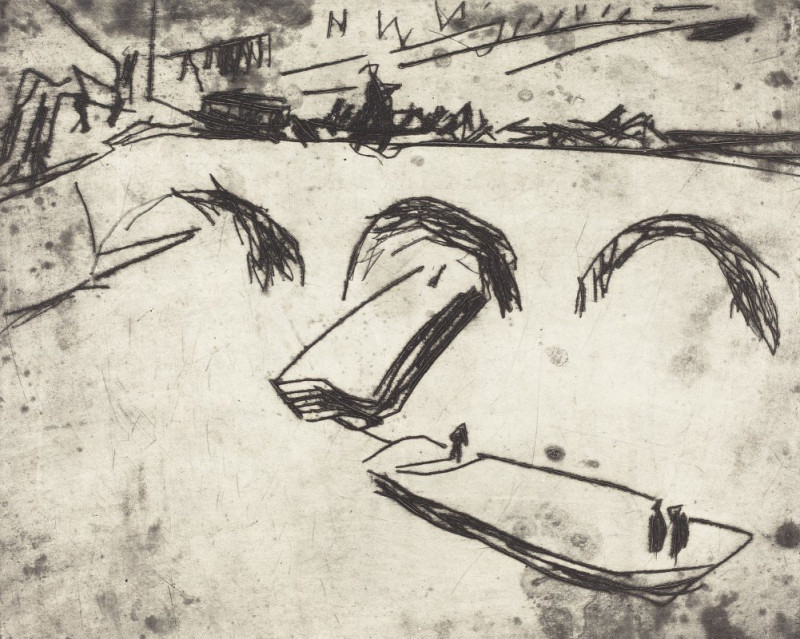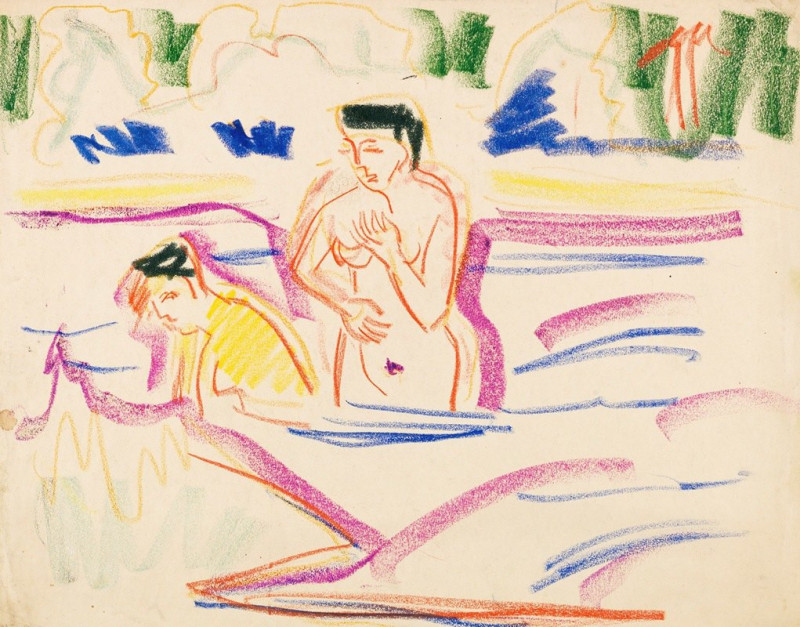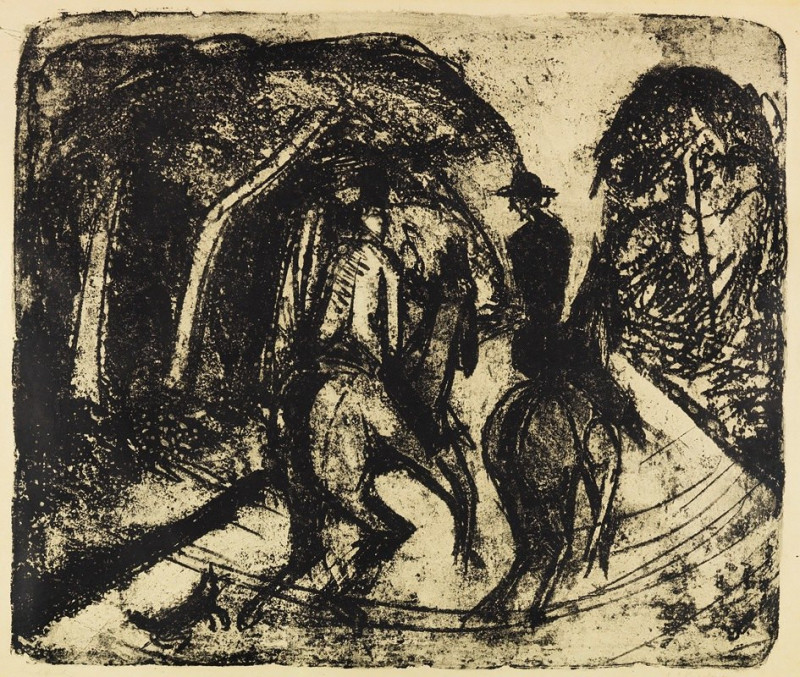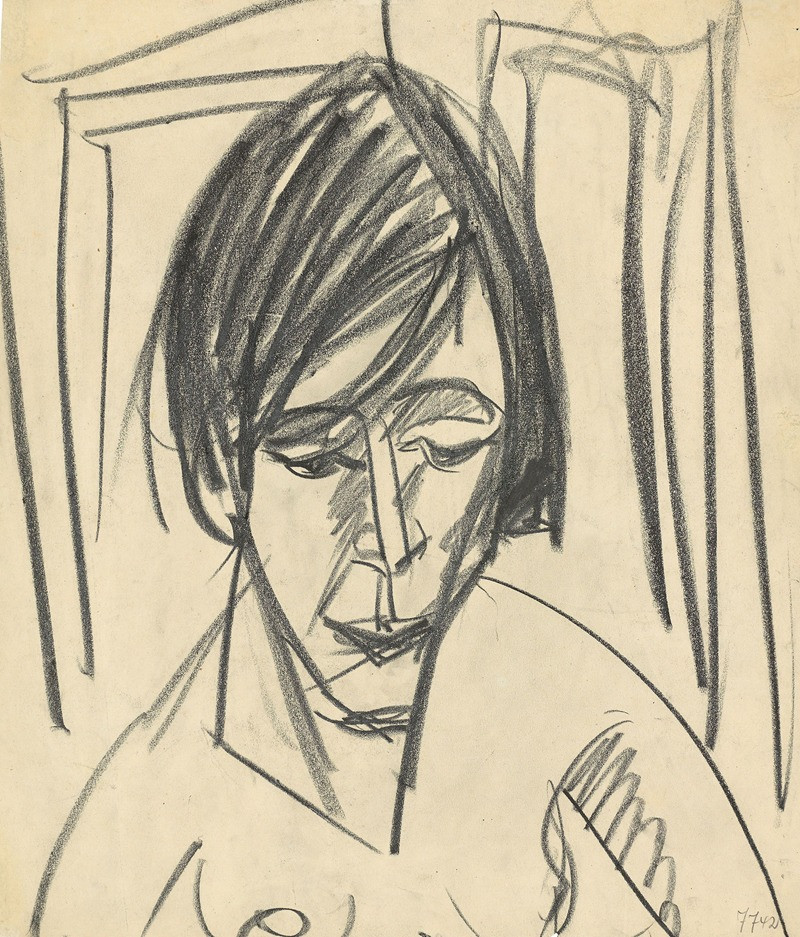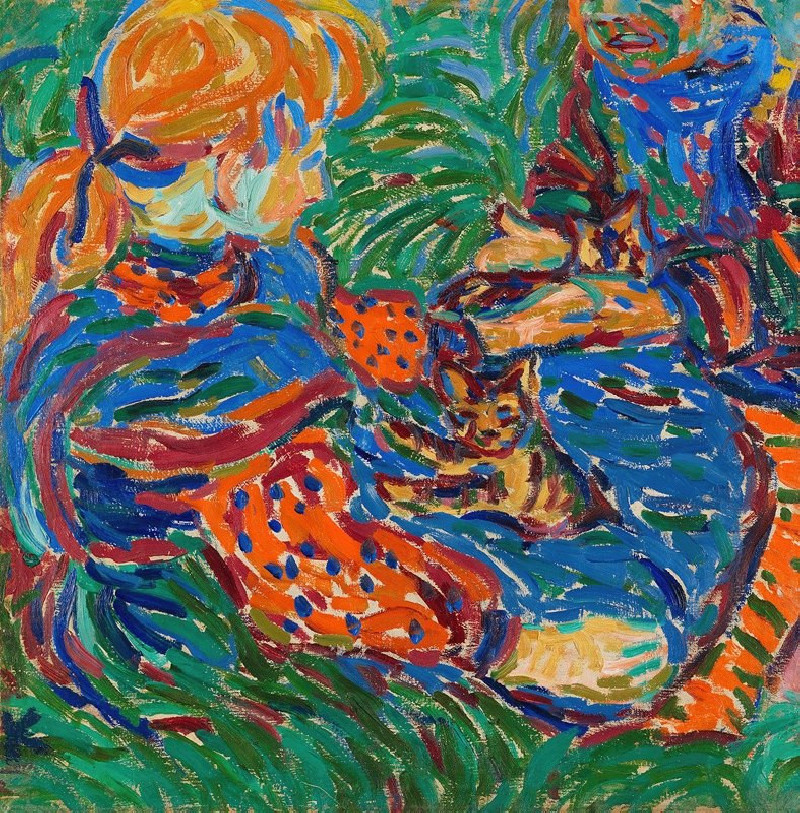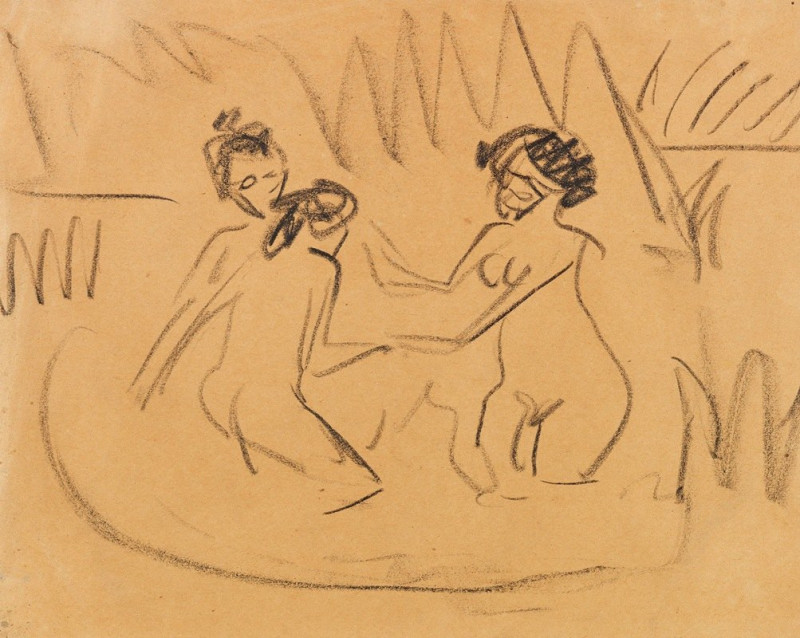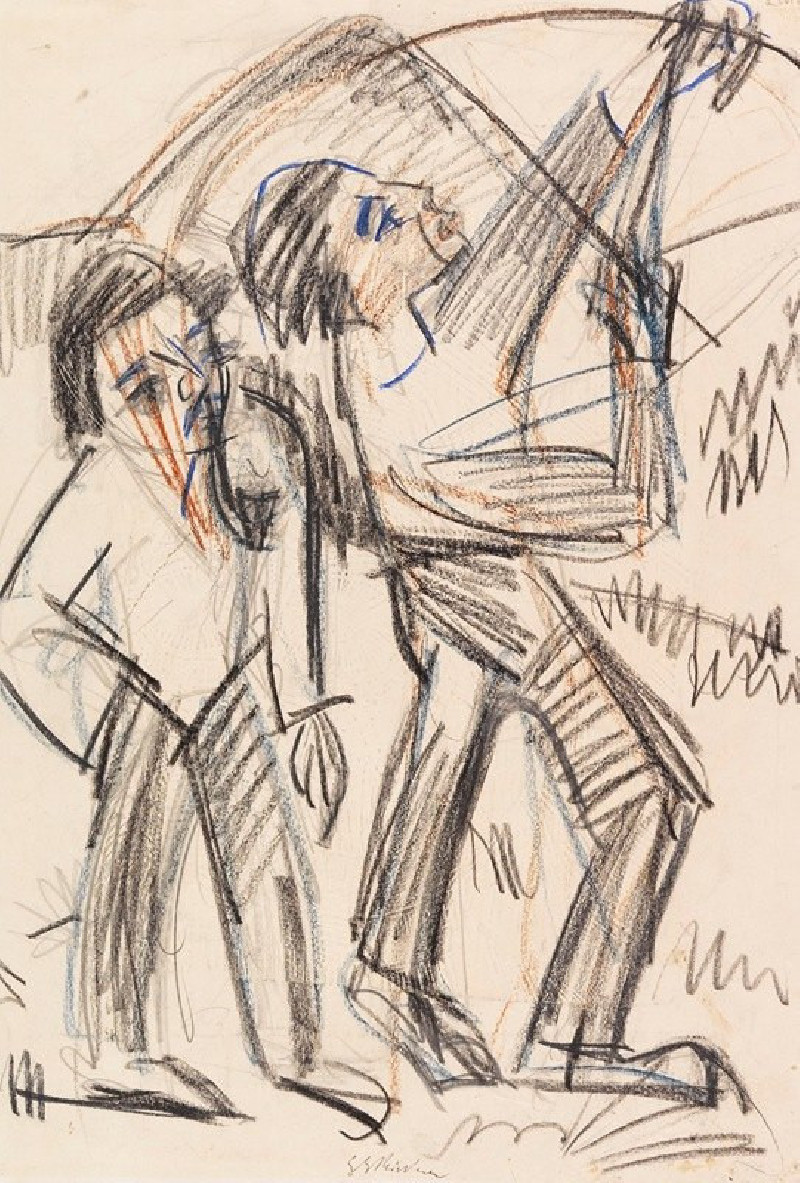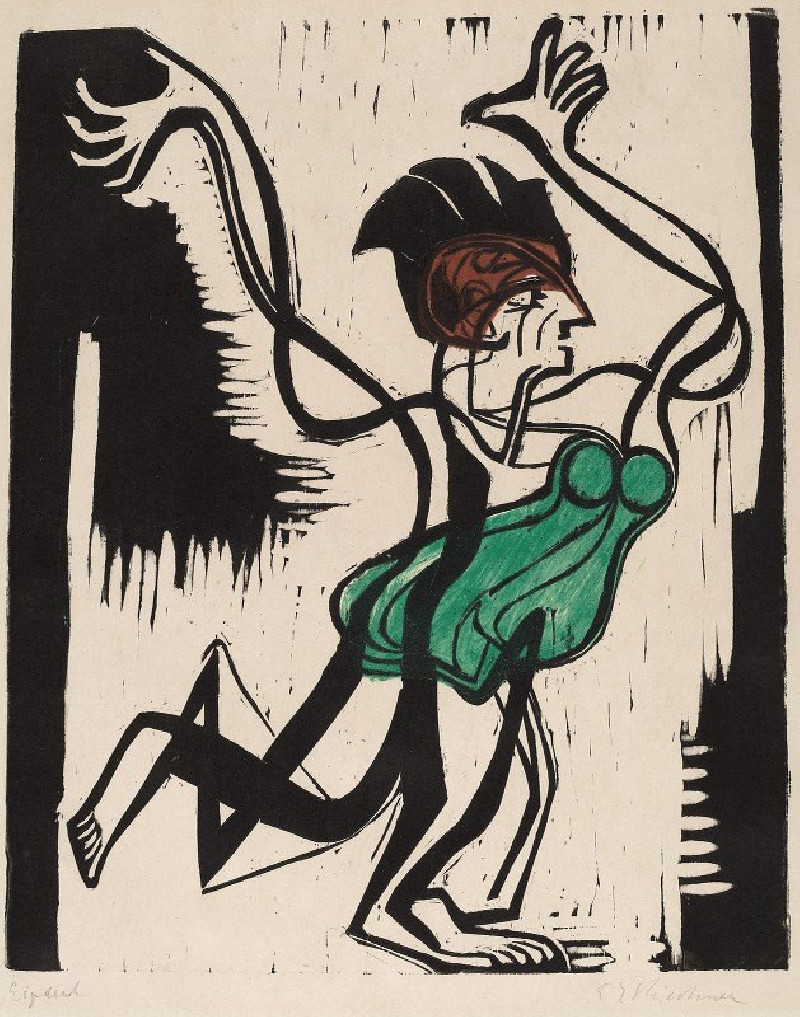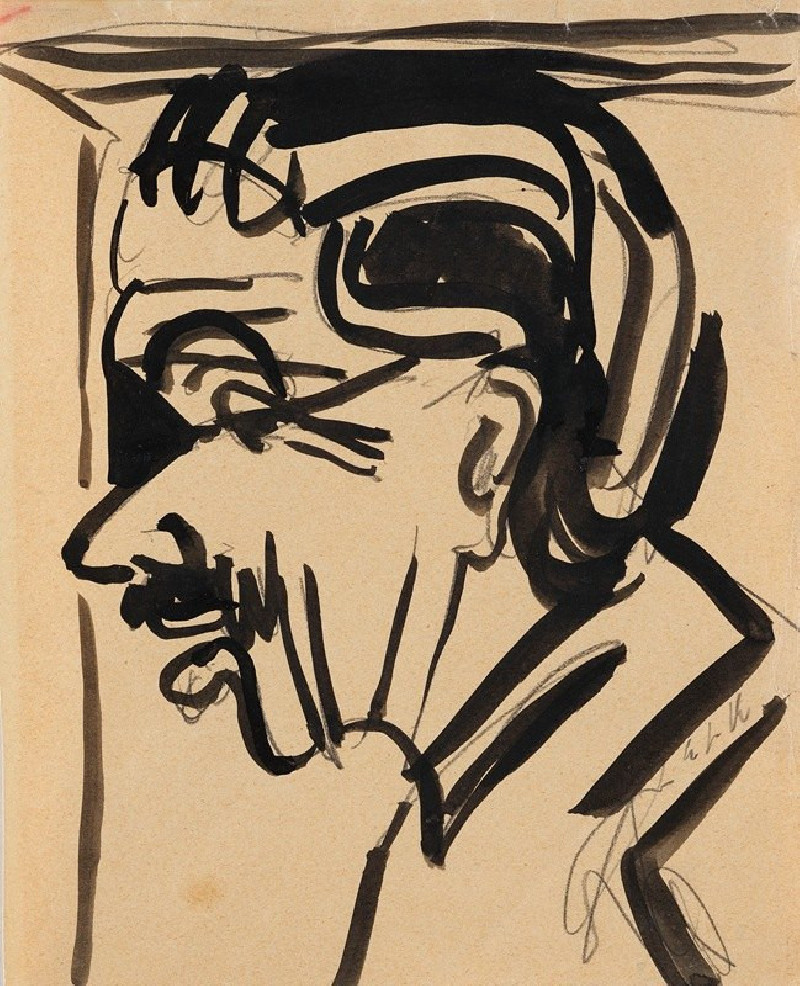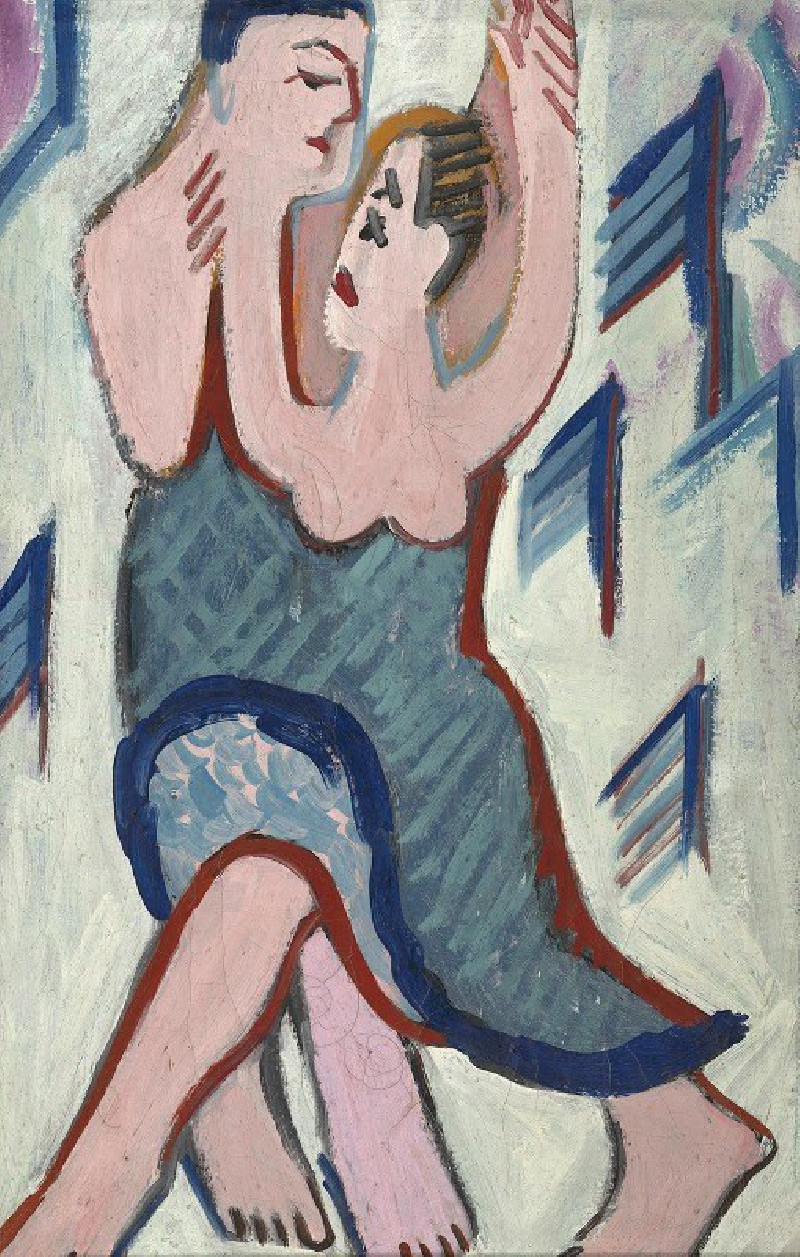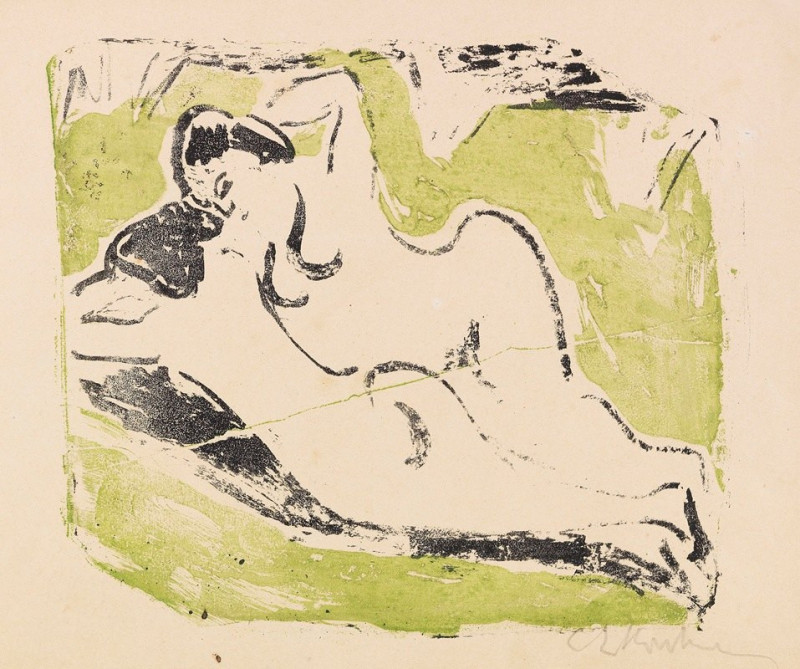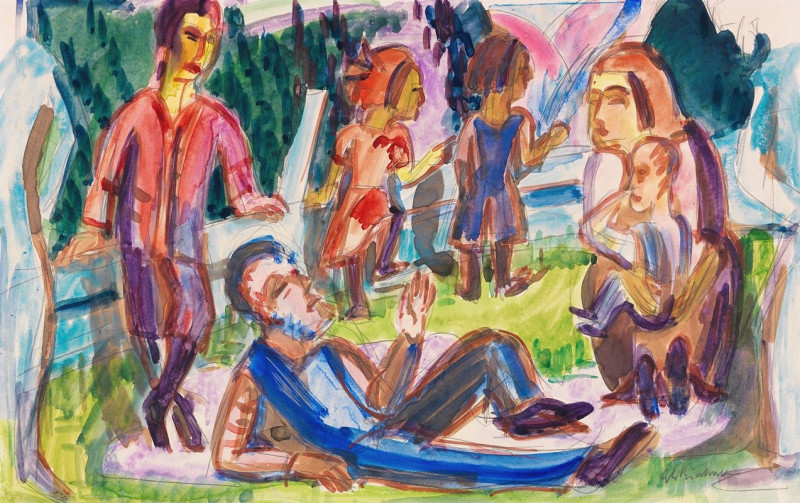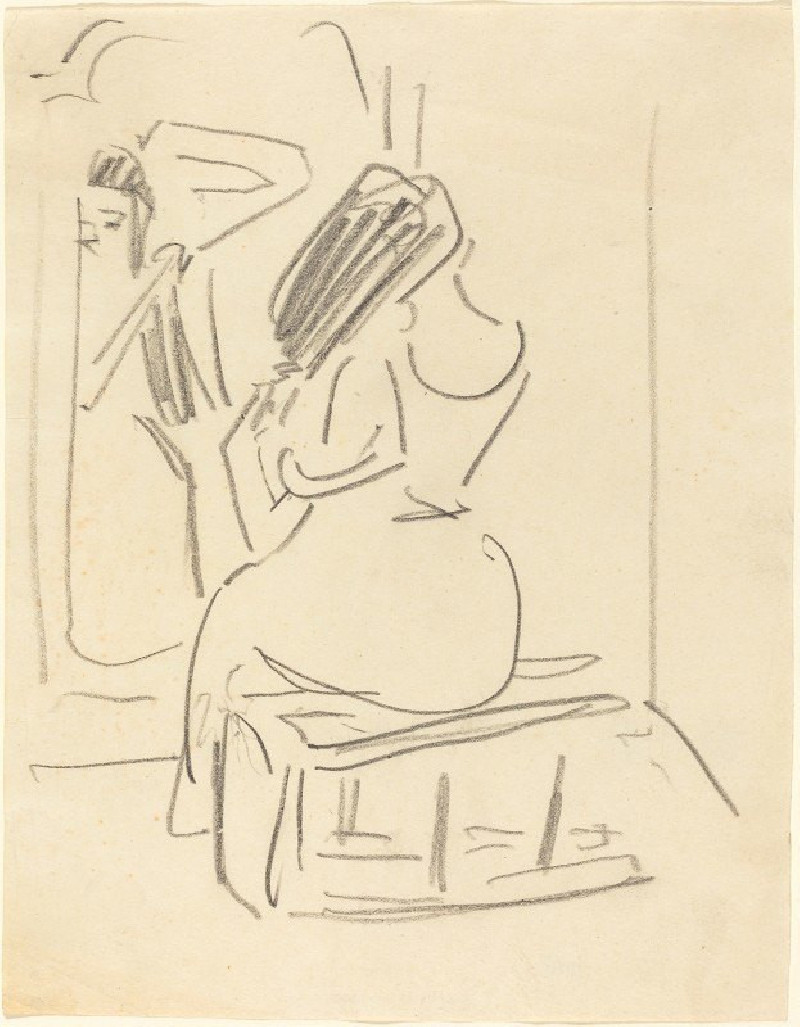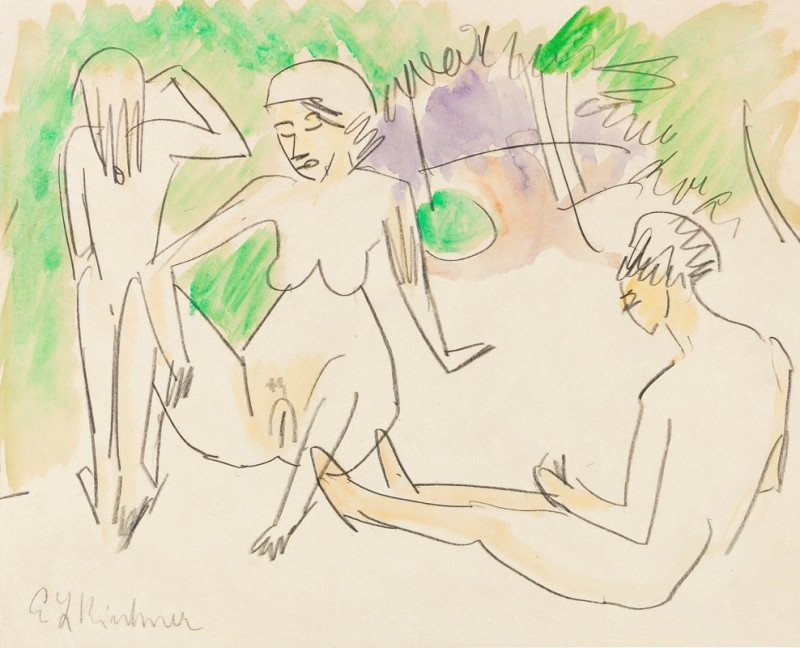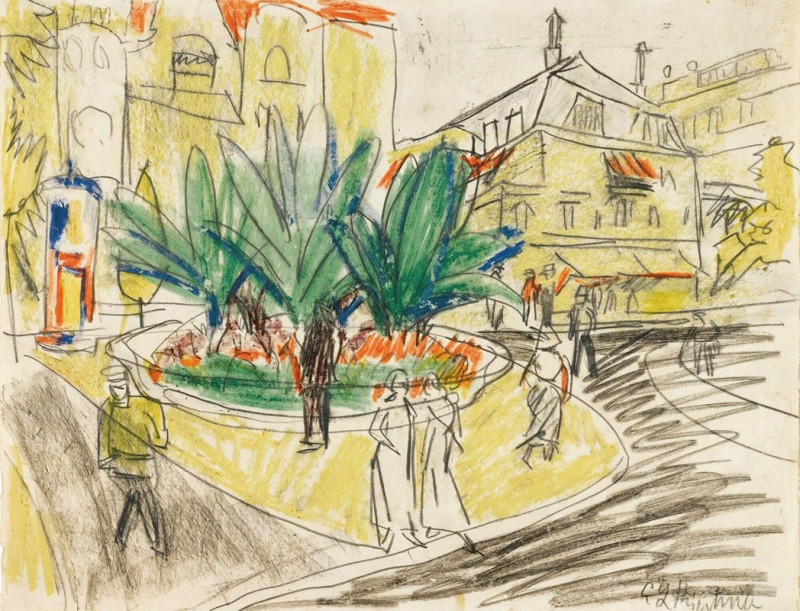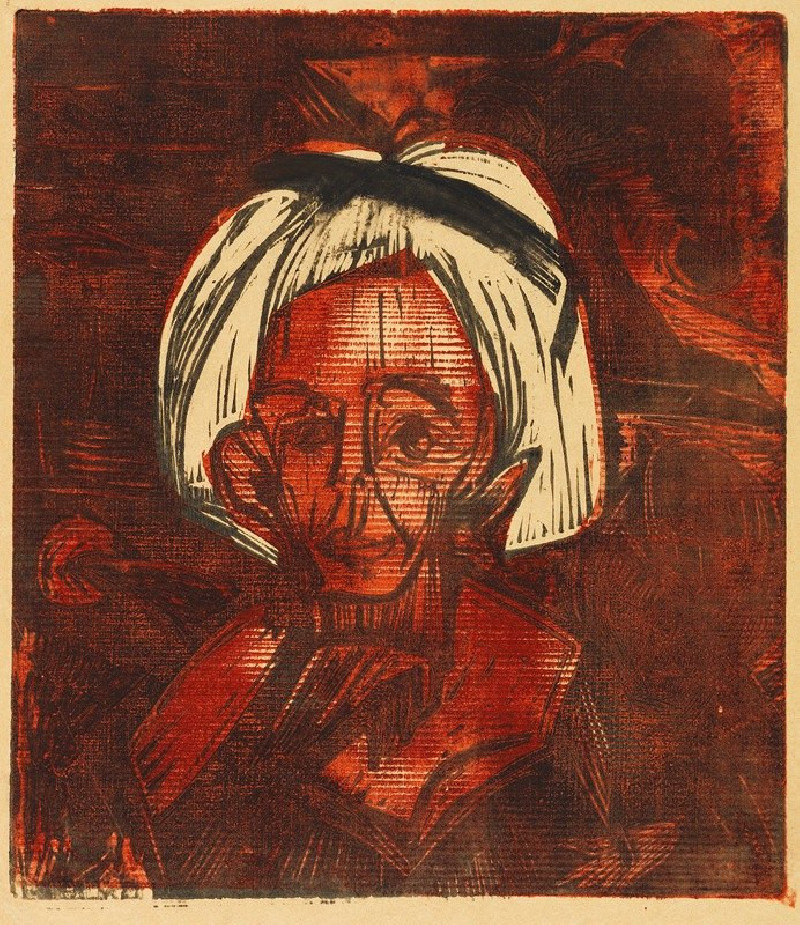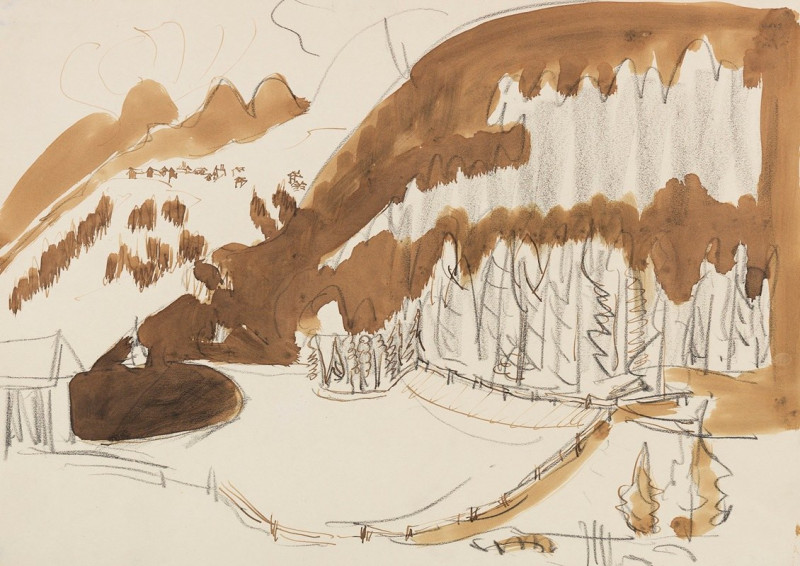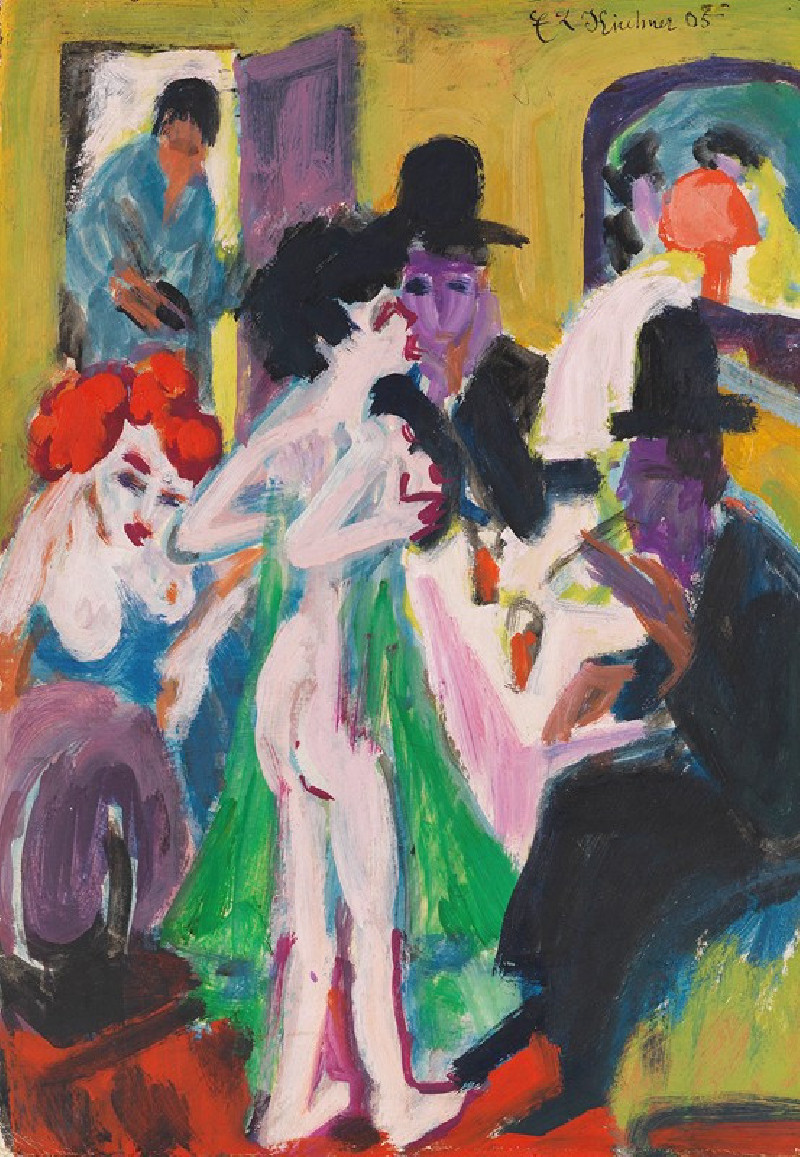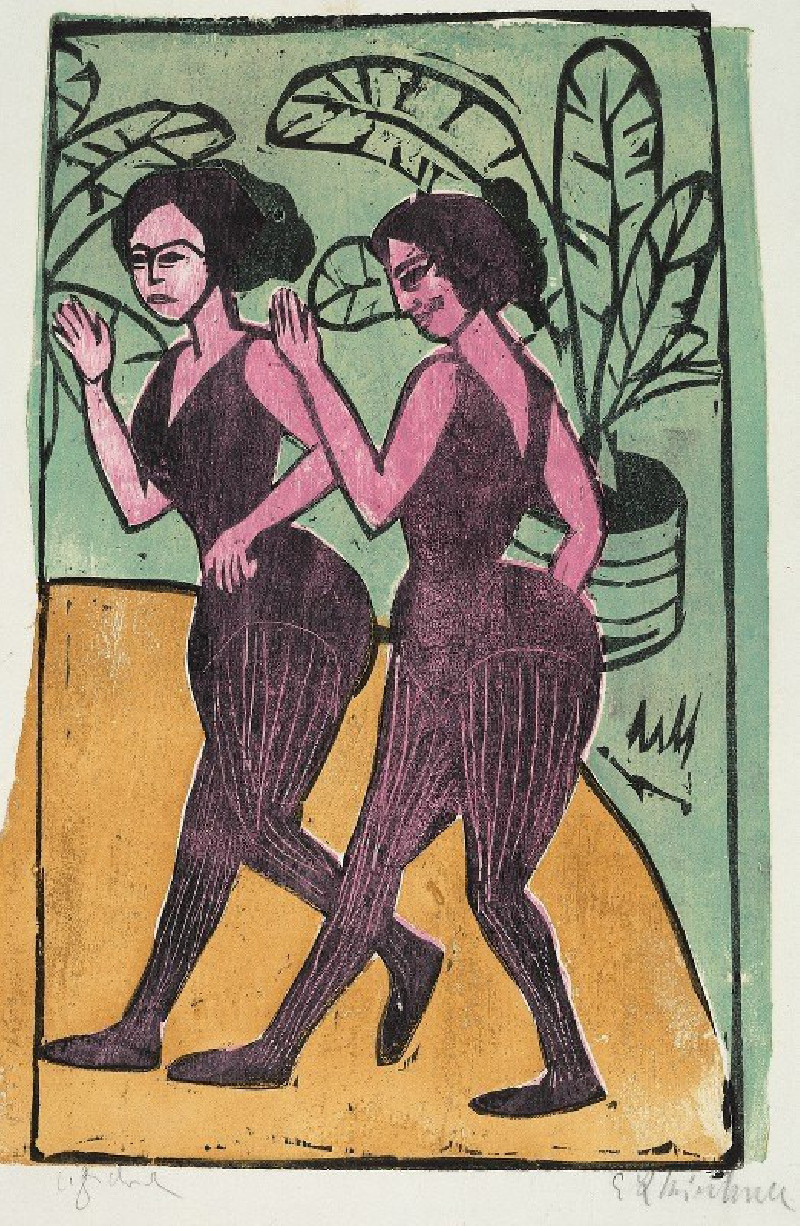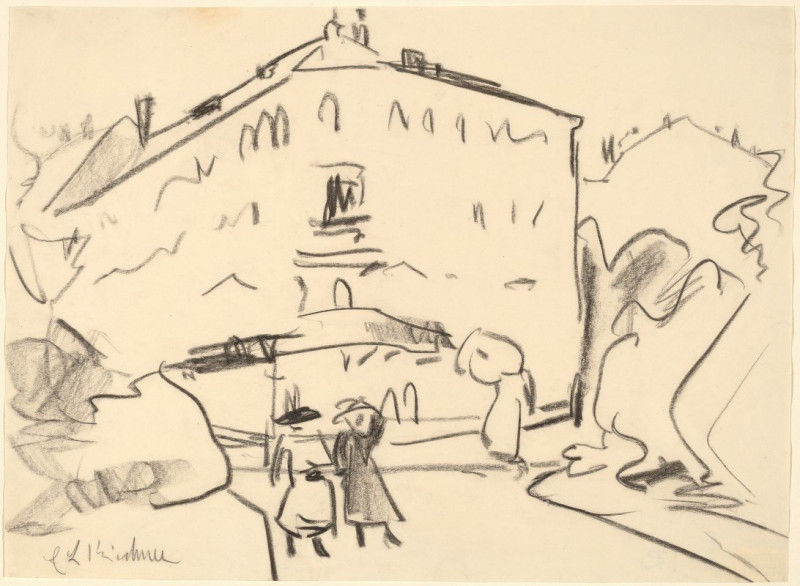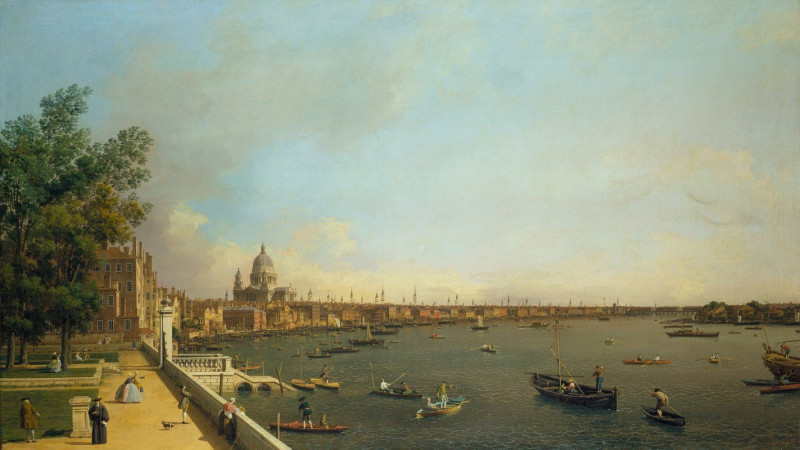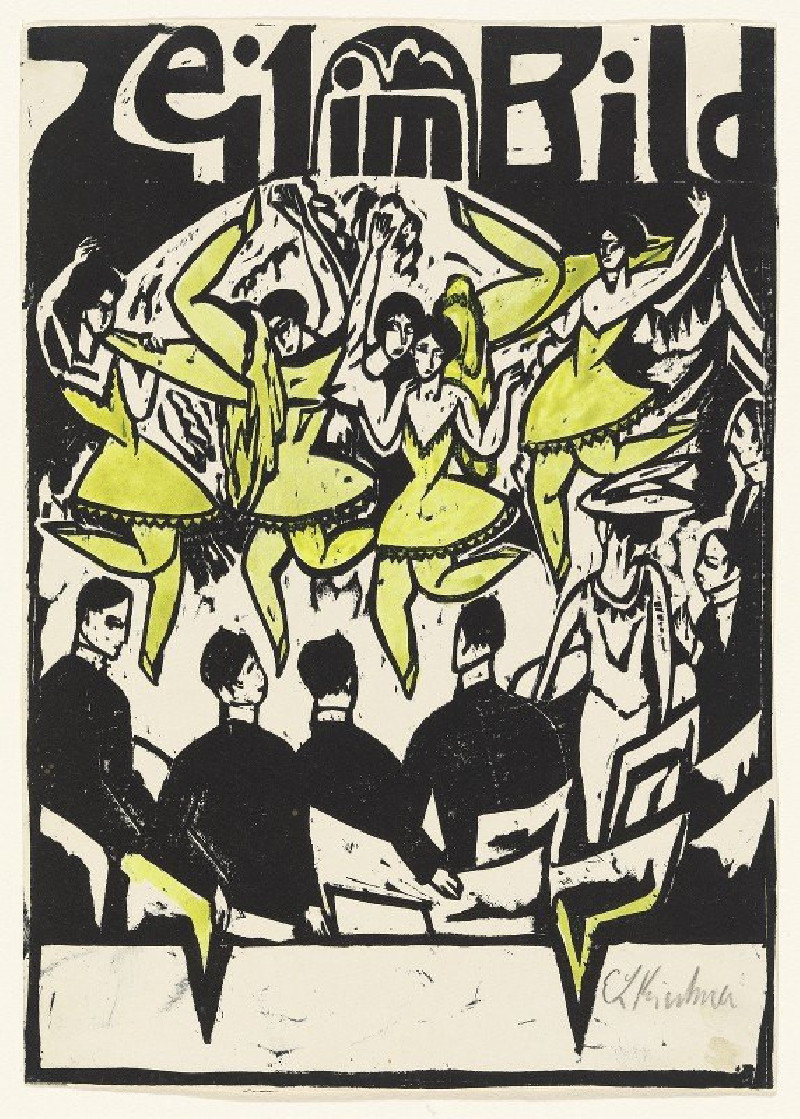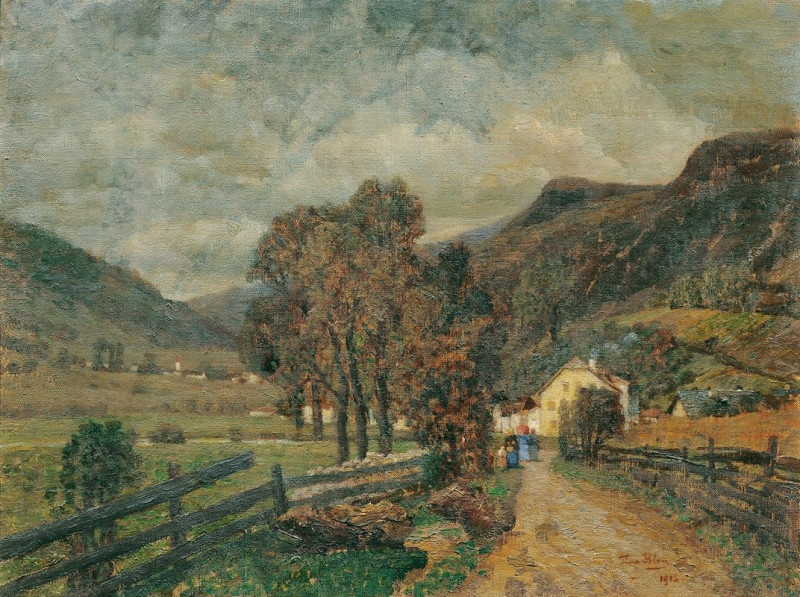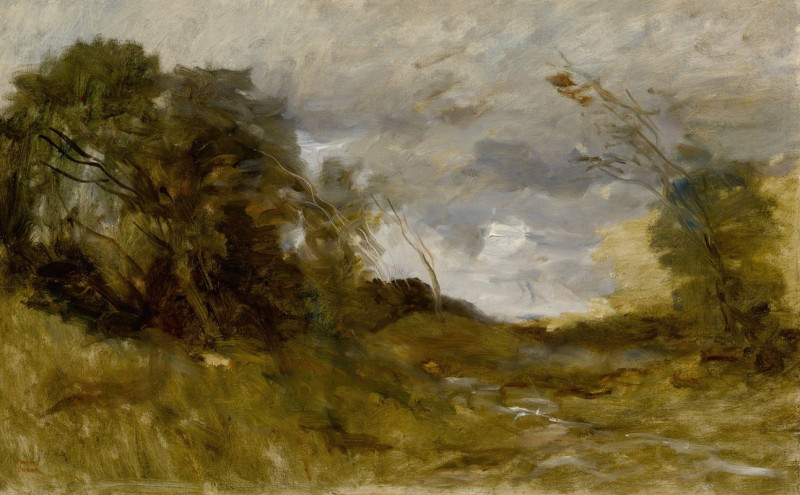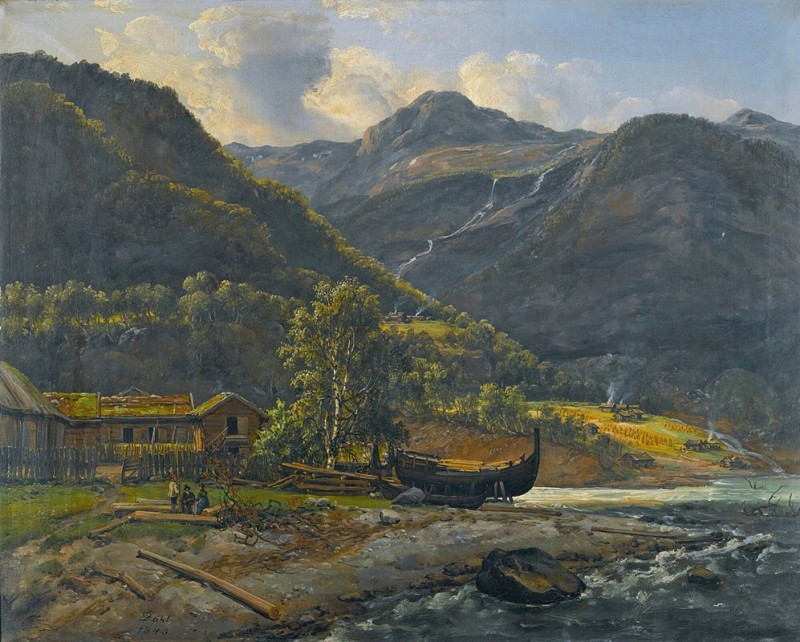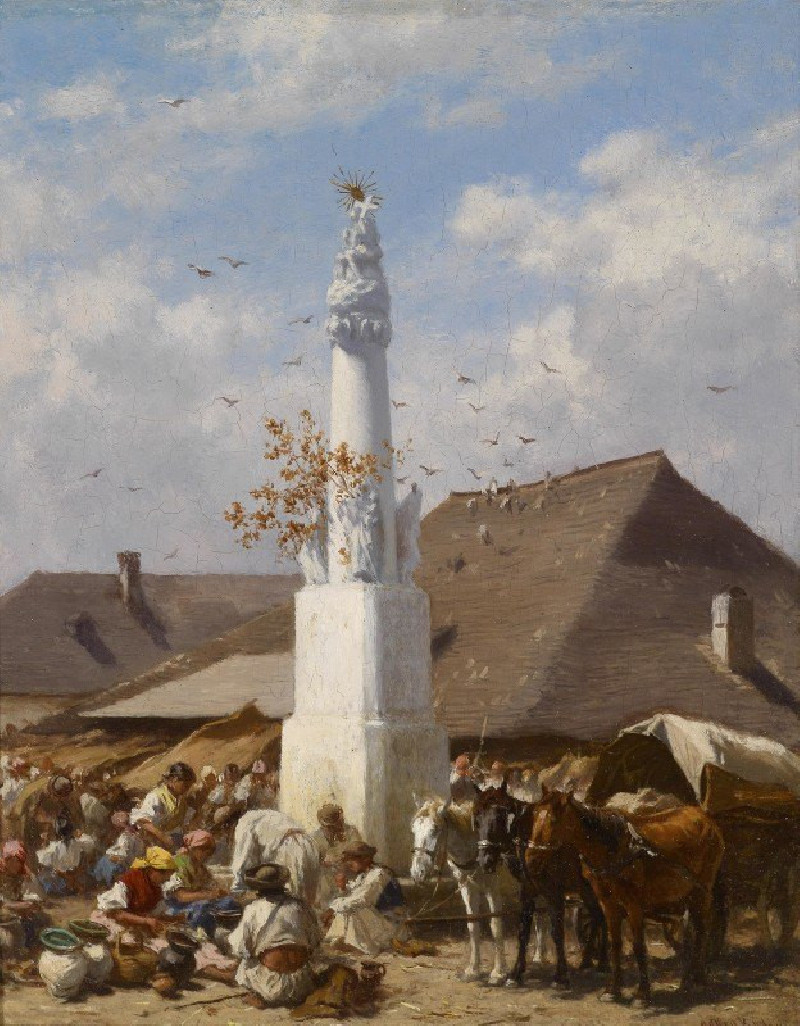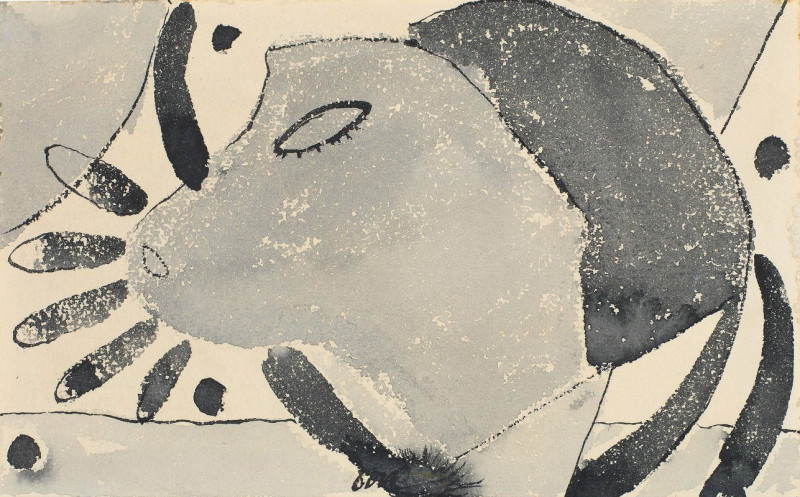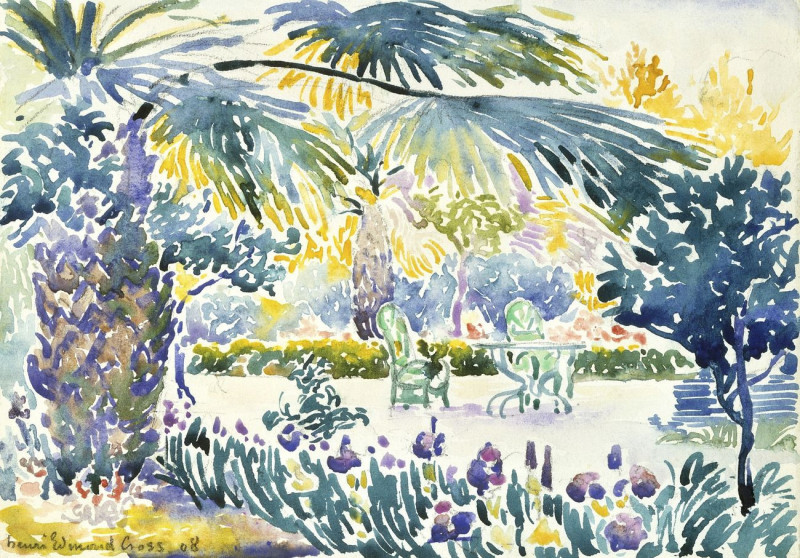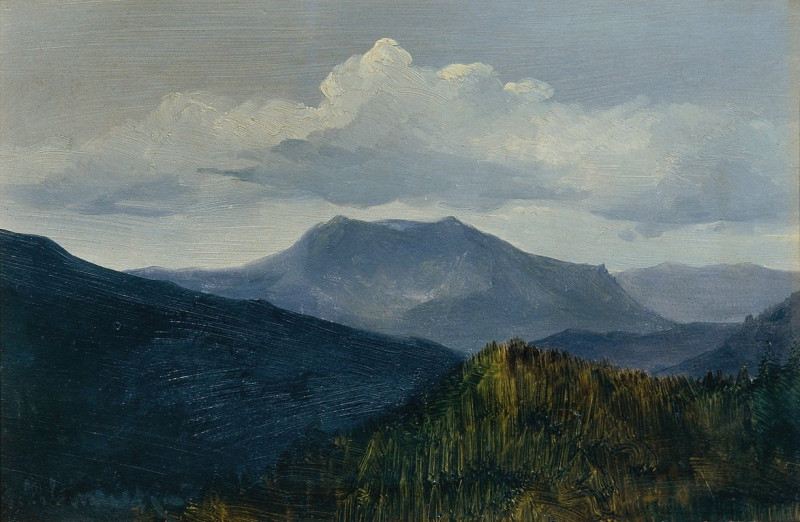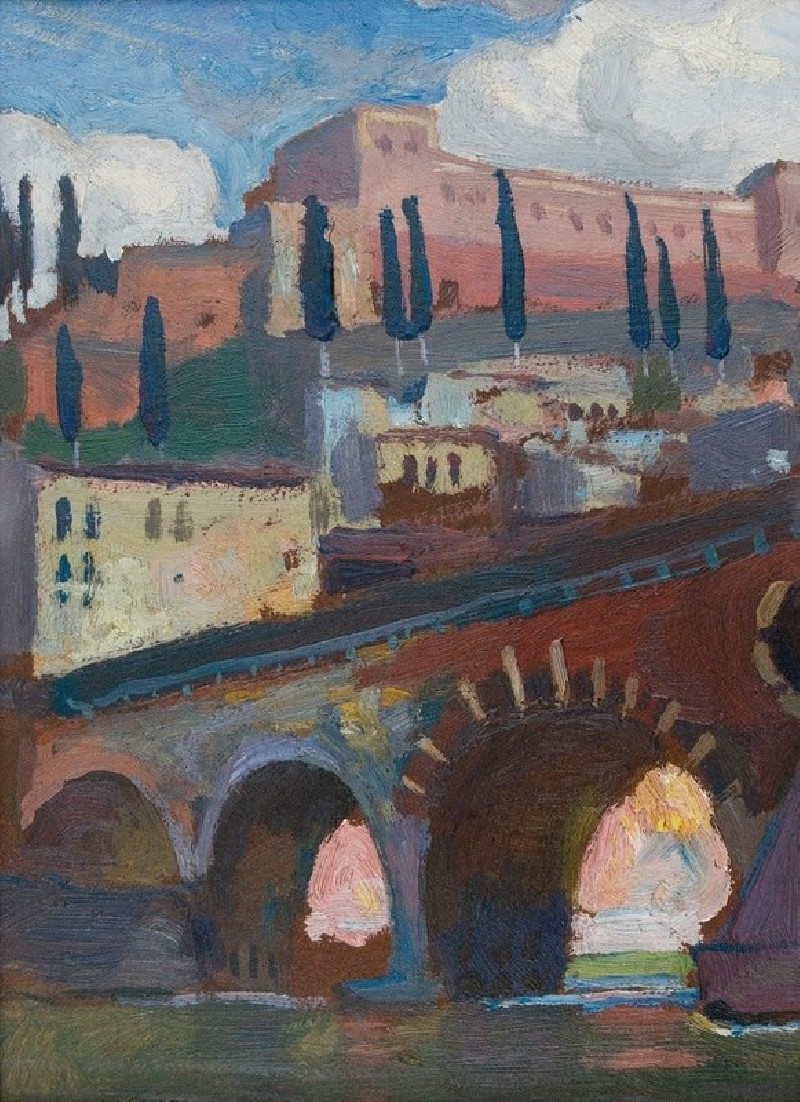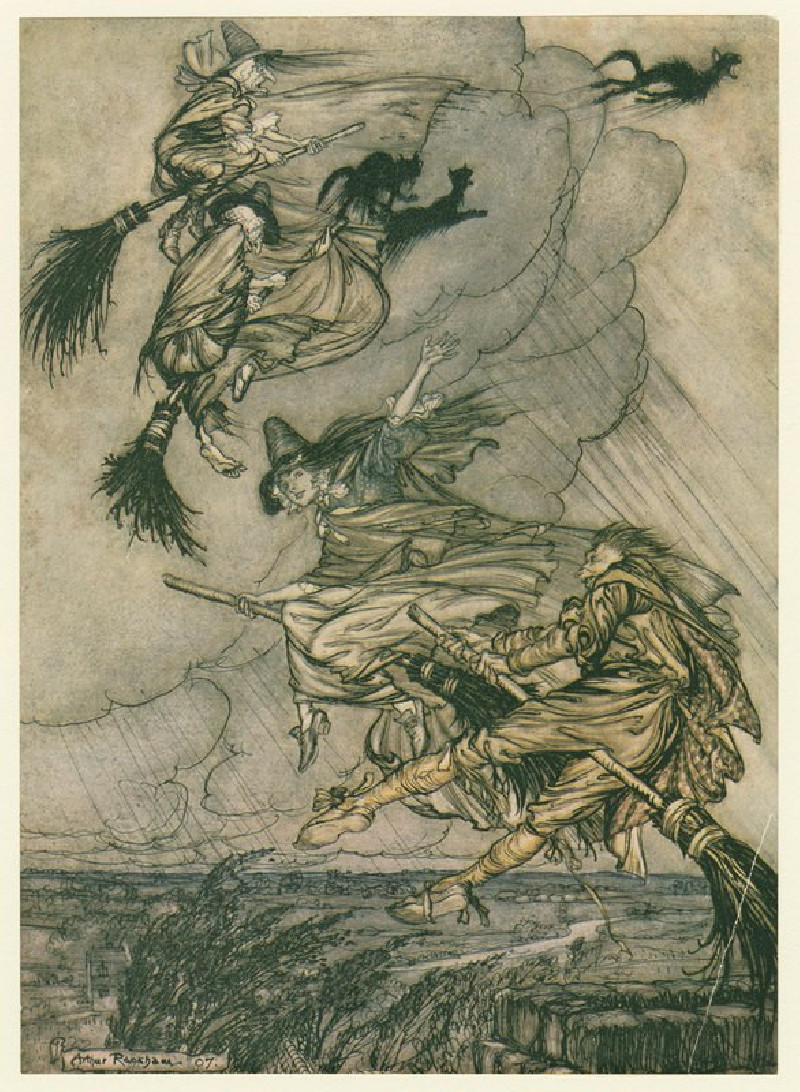Self Portrait (1925)
Technique: Giclée quality print
Recommended by our customers
More about this artwork
Ernst Ludwig Kirchner's Self-Portrait from 1925 offers a compelling glimpse into the artist's inner psyche, composed with the expressive color and emotional depth characteristic of his work. This painting shows a close-up view of Kirchner's face against a backdrop that contrasts vivid blues and greens, giving the image an introspective yet intense feel.His use of bold, flat areas of color and exaggerated forms distorts reality to convey emotional truths, demonstrating key elements of Expressionism. The sharp angles and lines of Kirchner's face reflect his personal turmoil and the artistic tension of the period. The yellow vase near his head adds an additional touch of vibrant color, impacting the composition with a sense of surreal presence amidst the stark portrayal of self.This self-portrait is not just a reflection of Kirchner himself but also a striking representation of the broader artistic movement he helped pioneer.
Delivery
Returns
Ernst Ludwig Kirchner (1880–1938) was one of the most important German Expressionist painters. He was a co-founder of Die Brücke, a group of German expressionist artists formed in Dresden in 1905. Die Brücke and Kirchner took inspiration from Vincent Van Gogh and Edvard Munch, as well as African and Oceanic art. They used woodblock printing as a medium to showcase their signature style: flat, unrealistic images with vivid colors. The recurring themes in Kirchner's artworks included exotic cultures, faraway landscapes, self-portraits, dancers and Berlin street life. His paintings and prints effectively portrayed non-European cultures despite the fact that he never traveled outside of Europe.

